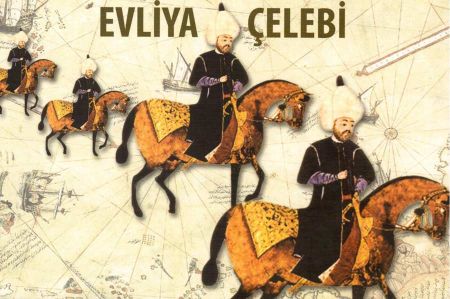About the history of Erzincan - from Urarterians to Timur
- Written by Portal Editor
Like lot of other Turkish towns, Erzincan has a long history. Even though Hittite settlements have not been found to date, Erzincan is named as belonging to the Hittite Empire.
After the fall of the Hittite Empire, from 900 BC the Urartians settled here. As early as in 1953, Urartean finds were made during an excavation near the city centre. About 600 BC the Medes gained dominion about Erzincan region. The battle between the Medieval king Kyaxares II and the Lydians probably took place in the region around Erzincan. From 550 BC the Medes were replaced by the Persians.
Around 70 BC the Romans undertook campaigns to Eastern Anatolia and conquered Erzincan. But a short time later (68 BC) the "Empire of Pontus" was able to conquer the area around Erzincan from the Romans. In the following centuries, Erzincan belonged to the area that was contested between the Byzantine Empire and the Iranian Empire of the Parthians and Sassanids. In 629 the Byzantines recaptured Erzincan by the help of the emperor Herakleios.
In 655, during the Islamic expansion, the Arab general Habib bin Mesleme captured Erzincan. With the fall of the Sassanids, the Byzantines in Eastern Anatolia now had to fight against the Arabs. In 859, the Abbasid governor in Malatya, Omar bin Abdullah, was able to recapture the area around Erzincan from the Byzantines.
Turkish conquerors come to Ercinzan
When the Turks came to Anatolia in the 11th century, they defeated the Byzantines at the Battle of Manzikert in 1071 under King Alp Arslan. With this victory, the Turks settled permanently in Anatolia. One of Alp Arslan's generals, Mengücek Ahmet Ghazi, explored and conquered the Erzincan area, among other places. He soon ruled the areas of Erzincan, Kemah, Divriği and Şebinkarahisar. Kemah became his headquarter.
His successors founded the Mengücek Beylik, which existed until 1228. Under the rulers of the Mengücek and especially under Fahrettin Bahram Shah, who ruled between 1165 and 1225 and was the son-in-law of the Seljuk Sultan Kılıç Arslan II, Erzincan experienced an economic and cultural boom. With the conquest of Erzincan and Kemah in 1228 Kaykobad I. ended the rule of the Mengücek. Little later, Kaykobad I. fought in the battle of Yassı Çemen near Erzincan against the last Khorezm Shah Jalal ad-Din in 1230, who came to Anatolia with his entourage on the run from the Mongols. Kaykobad I. emerged victorious from the battle.
Constant battles and wars in the Middle Ages

In the following years, Erzincan was always fought between the local principalities, some of which had the support of other large states. Later, both the Ottomans and Timur laid claim to Erzincan. Timur defeated the Ottomans under Bayezid I. 1402 near Ankara and was able to rule over most of Anatolia.
The Ottomans could only gain influence again under Fatih Sultan Mehmed II. But in the meantime, the Qara Qoyunlu were able to conquer Erzincan in 1419. In 1455 Uzun Hasan conquered the city and the Qara Qoyunlu were ousted by the Aq Qoyunlu. When the Ottomans under Mehmed II defeated Uzun Hasan at the Battle of Otlukbeli on August 11, 1473, Erzincan came under Ottoman rule.
But in 1502 the first Safavid Shah Ismail established a headquarter in Erzincan. However, after the Battle of Tschaldiran in 1514, the Safavids had to evacuate Eastern Anatolia and thus also Erzincan, so that the Ottomans again controlled Erzincan. Suleyman I visited the city twice, once in 1534 when he was moving against Tabriz, the capital of the Safavids, and once in 1540 when he was moving again against Iran.
The remains of the former city lie near the airport on the road to Cağlayan. The city wall, which were maintained until the 16th century, enclosed an area of around 200 × 150 meters. Individual short sections at a low altitude reveal their location. At the southwest corner a hexagonal defence tower remained upright up to the first floor, 20 meters to the north a large gate building from Ottoman times has also been preserved. Two wide hammams with flat domed roofs are 50 meters apart between vegetable fields. Another building ruin is referred to as a medrese. The two hammams and the medrese are currently (2018) being restored. One will be converted into a museum, the other will serve as a bathroom in accordance with its original purpose.
At the beginning of the 20th century, the area was also inhabited by Armenians who were murdered or expelled around 1915. In the summer of 1915, Erzincan was occupied by Russian troops under General Yudenich. In 1939 almost the entire city was destroyed by a catastrophic earthquake. After the end of the Second World War, the city was expanded into a garrison without any significant industry being established.
Please also read:
Skanderbeg - Albania's myth in the urge for freedom
Györ - The Archaeological Significance of Arrabonas